When diving into Japanese mythology, you’ll find a lot of gods and legendary heroes — and one fascinating figure is Takeiwatatsu-no-Mikoto.
Let’s explore who he is, his connection to Aso in Kyushu, and the epic tales that have been passed down for generations!
Takeiwatatsu-no-Mikoto: Grandson of Japan’s First Emperor
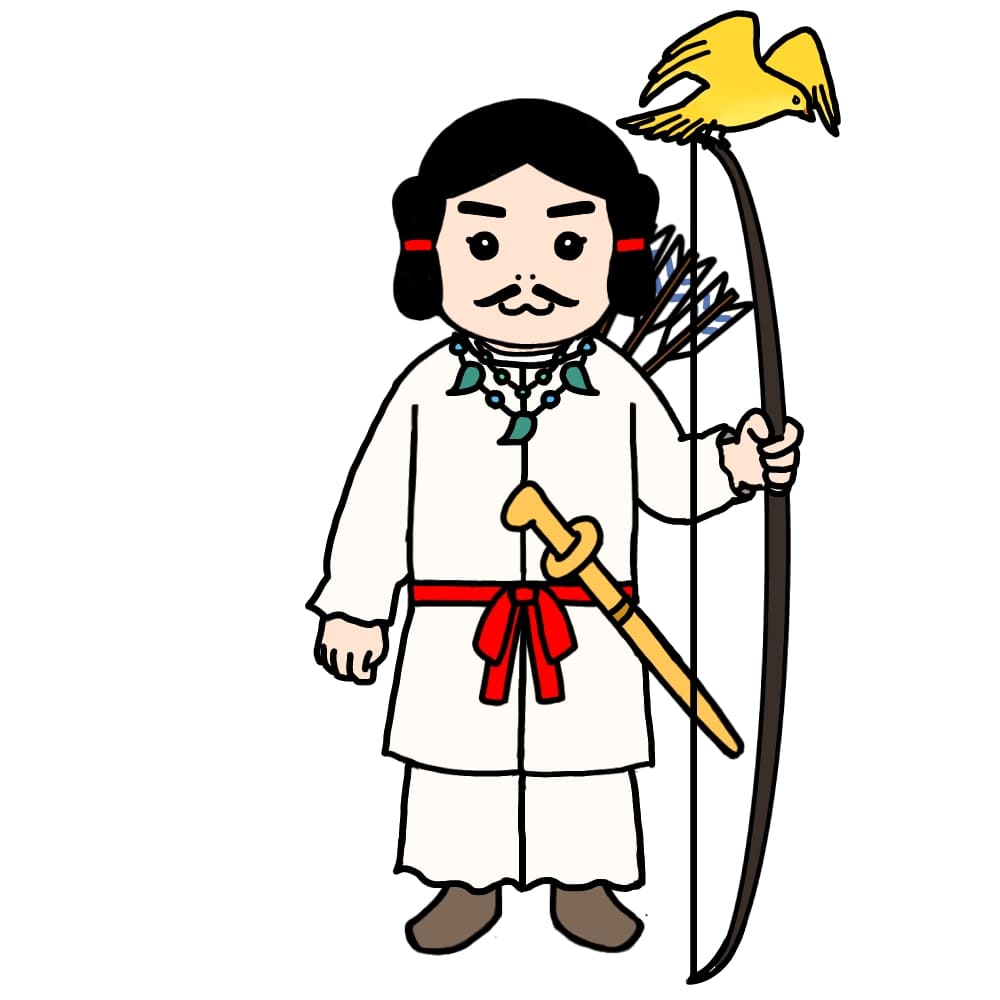

Is he Emperor Jimmu?

Yes! Takeiwatatsu-no-Mikoto’s grandfather is Emperor Jimmu.
Takeiwatatsu-no-Mikoto is a legendary figure from ancient Japan, regarded either as a historic person or a divine being.
He is the grandson of Emperor Jimmu, the first emperor of Japan according to mythology.
Following orders from his grandfather, Takeiwatatsu-no-Mikoto traveled to Kyushu with a mission: to build and cultivate the land.
Among the countless gods (“Yaoyorozu no Kami”) who set out to develop Japan, he stands out as a pioneer who made Aso his stronghold.
The Guardian and Pioneer of Aso
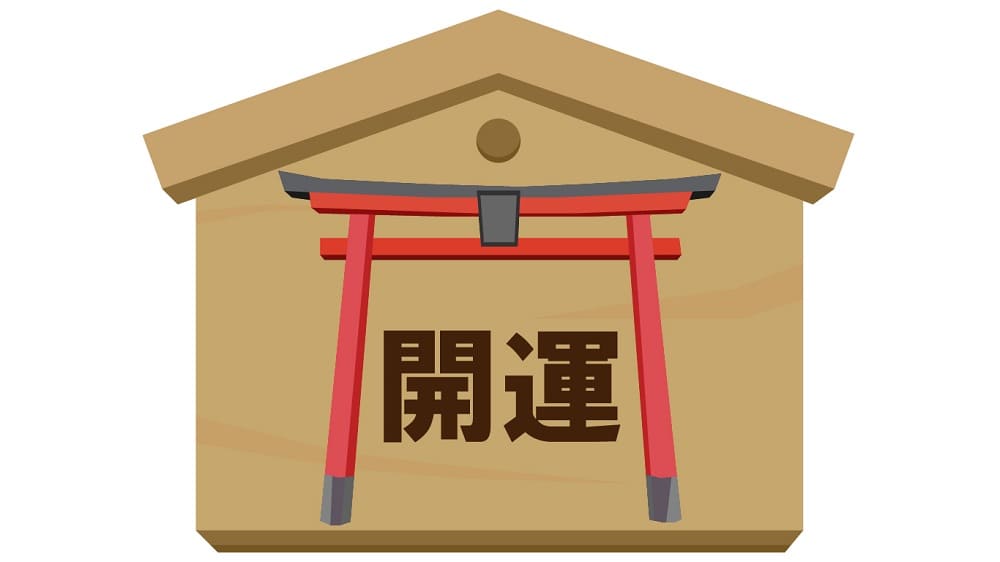
In Aso, Takeiwatatsu-no-Mikoto is worshiped as both a guardian deity and a pioneer god.
His blessings are said to bring:
- Good fortune
- Rich harvests
- Business prosperity
- Protection against plagues and disasters
Every autumn, a traditional dance called “Furyu Hanya Mai(風流・はんや舞)” — designated as an intangible folk cultural asset of Fukuoka Prefecture — is performed in his honor.
Why Aso? The Journey from Takachiho
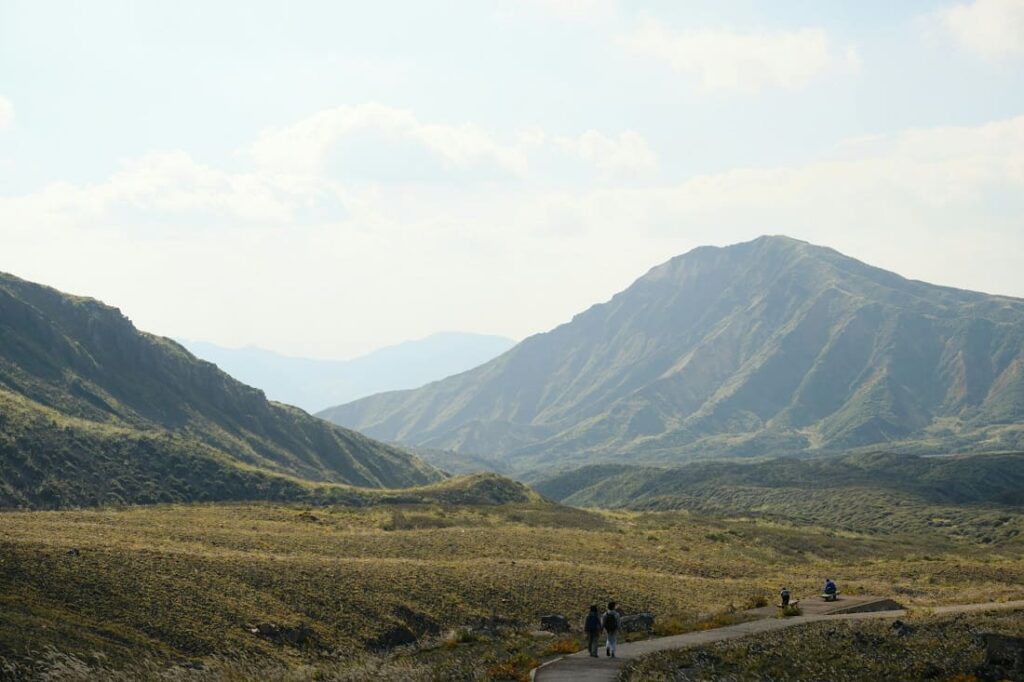
Takeiwatatsu-no-Mikoto believed that the center of Kyushu was Aso — often called “Tenso Aso” (Heavenly Ancestor Aso).
However, he first descended to Takachiho in Miyazaki Prefecture, a place known in legends as where gods first came down to Earth.
From there, he journeyed toward Aso to establish his base.

If you are interested in the story of Takachiho,
please check the article below.
Upon reaching Takamori Town in Aso, he married Asotsuhime, the daughter of Yoshimi no Kami (a local deity).
At that time, the great Aso caldera was actually a huge lake.
Takeiwatatsu-no-Mikoto decided that if he could drain the water, the fertile land would be perfect for farming.
Thus began an incredible quest to reshape the land.
Draining the Great Lake: Trials and Triumphs
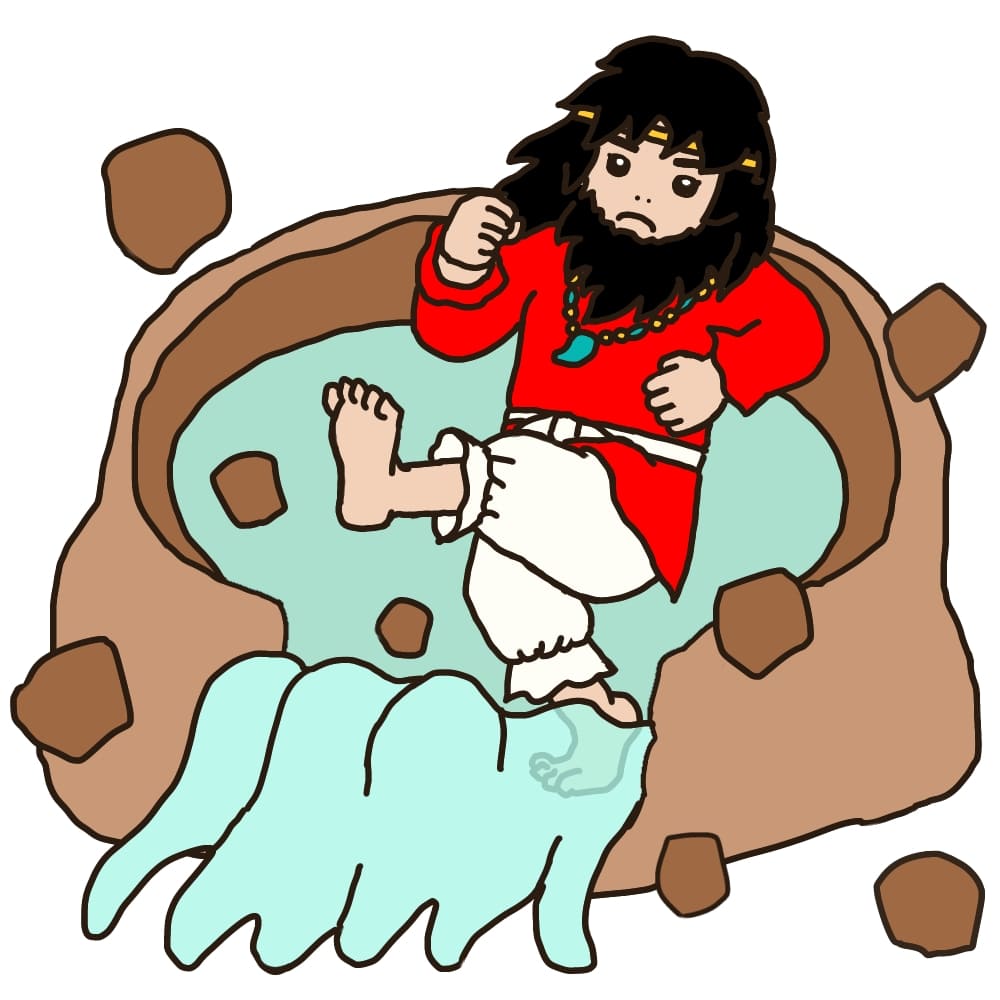
First, he traveled toward Ubuyama, where he and Asotsuhime had a child.
The area was named “Ubuyama” (meaning “birth mountain”) in celebration.
Then, he attempted to drain the lake by kicking the double-layered rock barrier at Niju-toge (Double Pass) — but it was too strong to break.
Not giving up, he moved further west to a place called Tateno(立野) and gave it his all with a mighty kick!
This time, the lake’s water began to rush out.
However, he kicked so hard that he fell on his backside and exclaimed, “Tatenu! / 立てぬ (I can’t stand up!)“
That’s how the area got its name, Tateno.

Haha…This is interesting!
Battling a Giant Catfish
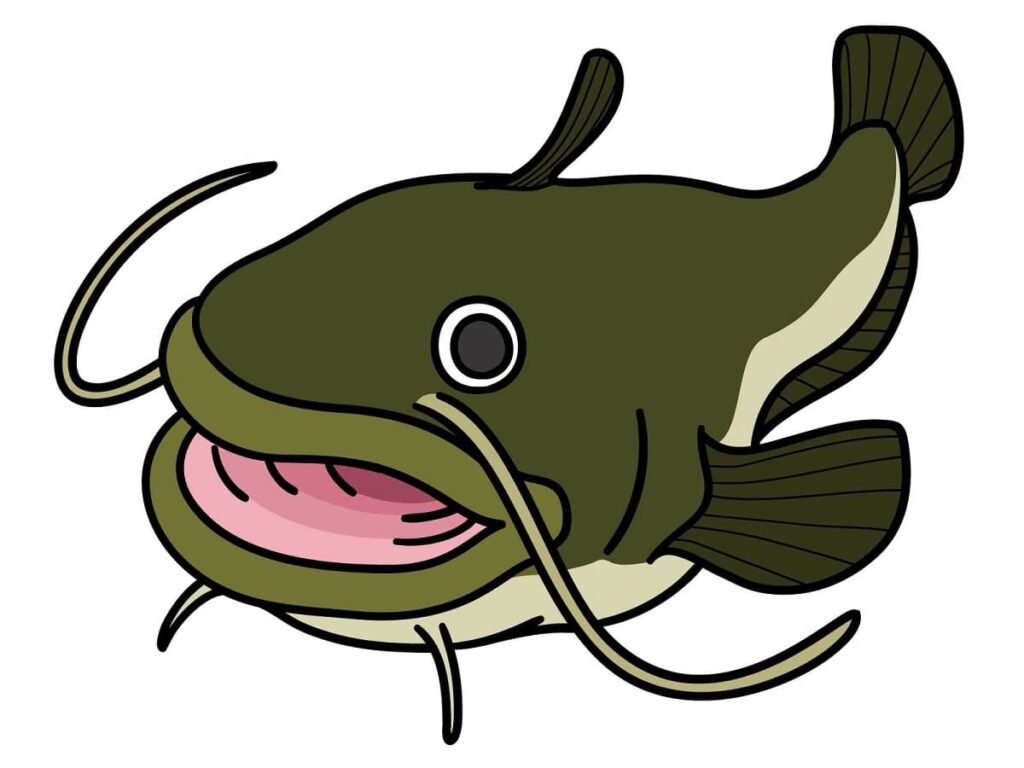
Even though the water started to flow out, it didn’t drain completely.
When Takeiwatatsu-no-Mikoto investigated upstream, he discovered a giant catfish blocking the flow.
In true mythological hero fashion, he fought and defeated the catfish.
The catfish was so massive that it weighed the equivalent of six “loads” (a traditional unit of carrying capacity), giving rise to the name Rokka (now Kamimashiki District).
To ensure the catfish wouldn’t block the river again, he tied a vine through its nose and secured it to a large rock in Ichinomiya Town, Ogoro.
Today, that rock is known as Hanaguri Rock (“Nose Piercing Rock”).

I read he use the vine of “Kazura” when he tied the catfish’s nose.

Kazura! It’s the plant I use to make baskets.
How Nature and Legends Shaped the Land
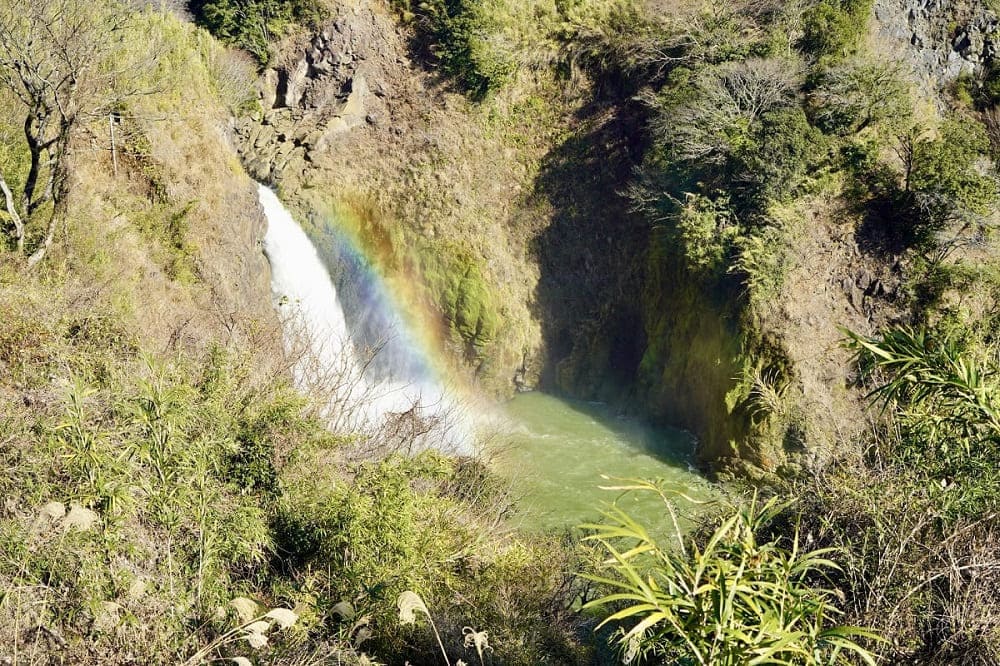
Sugaru–ga-taki(数鹿流ヶ滝)
The catfish’s thrashing caused the river to become incredibly muddy, leading to the name Kurokawa (“Black River”), now a major river system in the Shirakawa area.
Also, when the water gushed out of the lake so violently, a group of deer was swept away, giving birth to the name of a waterfall near Tateno Station:
Sugaru-ga-taki (“The Waterfall of the Flowing Deer”).
Where to Visit: Aso Shrine
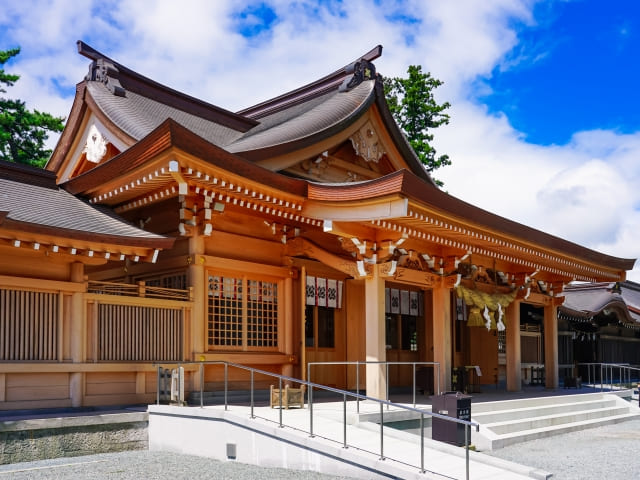
Today, you can visit Aso Shrine, the main shrine that enshrines Takeiwatatsu-no-Mikoto.
It’s a must-visit if you’re traveling around Kyushu and want to feel the deep connection between mythology and the land.

This shrine has more than 2,000 years history!
Final thoughts about Takeiwatatsu-no-Mikoto
Takeiwatatsu-no-Mikoto is a deeply beloved and regionally rooted deity in Japanese mythology.
As the grandson of Emperor Jimmu, he pioneered the land of Aso and created the rich, fertile earth that continues to thrive today. His great achievements live on in many place names and legends throughout the region.
If you ever have the chance to visit Aso, be sure to stop by Aso Shrine and reflect on the story of Takeiwatatsu-no-Mikoto.
It will surely be a wonderful journey where you can feel the deep connection between nature and people!

If you are interested in Japan, you may love these games!
In Nioh 2, I sometimes wear Miko costume. Please come to see me!
Let’s play!

Yes! Let’s play!

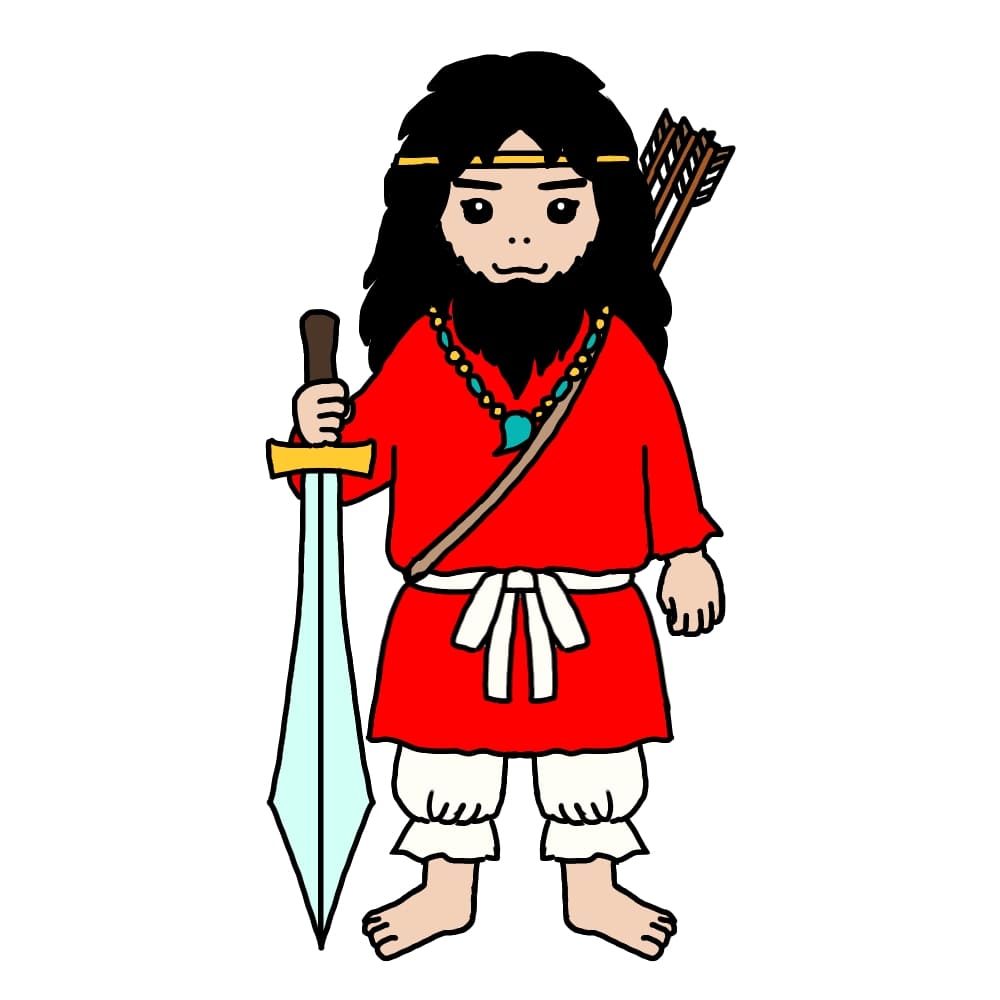



Comments